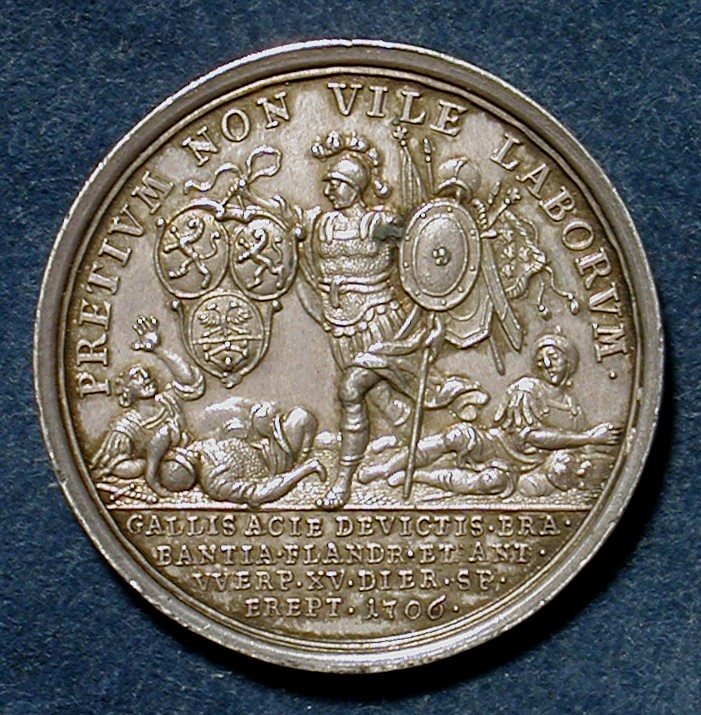|
DUKE OF MARLBOROUGH: BATTLE OF RAMILLIES , CONQUEST OF BRABANT HAUTSCH, Georg: England, 1706, Silver, 38
mm Rare Ref: Eimer 420; MI,ii, 287/95; v.Loon V, 33; Weiss BW799 John Churchill (1650–1722), First Duke of Marlborough was an English soldier and statesman. His life was complicated by the intrigues that existed during this religiously contentious period. He served the Catholic James, Duke of York, helping him to secure the throne, but abandoned him later, aiding in the accession of Protestant William of Orange as part of the Glorious Revolution, wherein William and Mary displaced James II and became monarchs of England. Marlborough’s rise to power was not without its setbacks, the major one being accusations of Jacobite treachery. During the reign of William and Mary, Marlborough was accused of aiding the restoration of James II and the seizure of William III, for which he was confined to the Tower of London. Following his release from the Tower, he regained his position of influence and ultimately reached his peak of powers and wealth under Queen Anne, particularly during the War of the Spanish Succession (1701-1714). At this time Marlborough became the de facto leader of Allied forces, his victories on the fields of Blenheim (1704), Ramillies (1706), Oudenarde (1708), and Malplaquet (1709), ensuring his place in history as one of Europe's great generals. The medal commemorates Marlborough’s victory in support of the Holy Roman Emperor Archduke Charles, the territories of Brabant and Flanders and the city of Antwerp, all in the space of 15 days after the Battle of Ramillies (a time frame alluded to in the medal). The legend on the edge refers to Marlborough’s boast, made at the end of his career, that he never besieged a fortress which he did not take, nor fought a battle which he did not gain. (The quotation is from Ovid [Epist. II. ix.45], not Virgil). LINK to Diagram of Battle of Ramillies (EmersonKent.com) |
|

